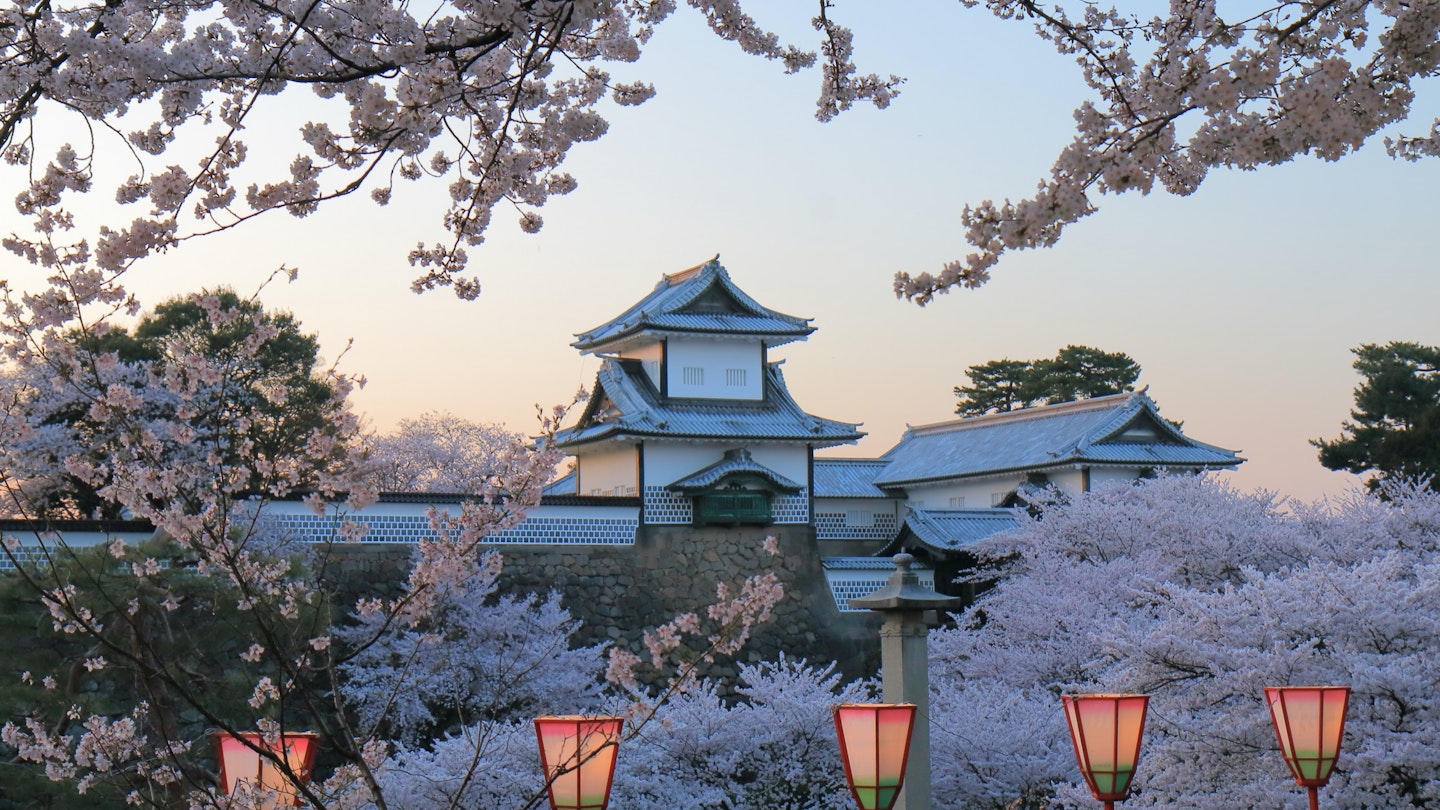Discover Japan’s Three-Star Road
The Mitsuboshi Kaidou or the Three-Star Road refers to the area that connects Matsumoto through to Kanazawa with a string of star-studded attractions, including the incredible Nagano area, creating one of the most interesting routes to travel in Central Honshu.
The Three-Star Road features destinations that have attained three stars in the Michelin Green Guide Japan and encompass some of the most important cultural properties in the country. Getting between them is simplified with the Three-Star Route Option Ticket (one way), a discounted bus pass that allows foreign visitors to traverse the Mitsuboshi Kaidou over seven days. The cost is just ¥5,500 (about $52 USD) for adults and half price for kids, making it an economical way to navigate these rich cultural sites.
Whether it’s your first time in Japan and you wish to venture off the popular tourist path, or you seek to delve deeper into traditional Japan, here’s what awaits you on the Three-Star Road.
Matsumoto
A trip to Matsumoto is well worth it just to see its impressive Matsumoto Castle. While many of Japan’s castles have been rebuilt due to war, fire, or modernization efforts, Matsumoto Castle remains one of only twelve original castles in the country.
Designated as a National Treasure, Matsumoto Castle’s wooden keep is the oldest surviving such structure in Japan, dating back to around 1593-1594. The striking contrast between the black castle and the white, snow-capped Japan Alps is a sight to behold.
This castle is not only a landmark but also a stunning feature in every season, especially renowned for cherry blossom viewing in spring. Enjoy Matsumoto Castle by venturing inside during the day and returning at night to admire its beautiful illumination reflected in the surrounding moat.
Onward bus journey: 2 hours 25 minutes to Takayama, no reservation required. Consider stopping at the beautiful Hirayu Onsen for a relaxing hot spring soak along the journey.
Takayama
Takayama, also known as Hida-Takayama, is among the best places in Japan to experience traditional streetscapes. A mere 10-minute walk from Takayama Station leads you to the Sanmachi Suji district, a well-preserved area of Edo-era buildings, showcasing craftsmanship reflective of the town’s rich history in woodwork. Notably, Sannomachi Street is lined with merchant homes, restaurants, cafes, and sake breweries.
If timed correctly, the Takayama Festival held in spring and autumn is among Japan’s most celebrated festivals.
Onward bus journey: 50 minutes to Shirakawa-go, reservation required.
Shirakawa-go
Nestled in a scenic valley within Gifu Prefecture is Shirakawa-go, a UNESCO Cultural Heritage site featuring a unique village and an outdoor museum of approximately 110 gassho-zukuri farmhouses, with many more in the surrounding areas.
The term gassho-zukuri translates to ‘constructed like hands in prayer,’ as the steep, thatched roofs resemble the praying hands of a monk. These highly peaked roofs are designed to withstand the area’s heavy snowfall without the use of nails.
Your bus will drop you off in Ogimachi, the main attraction of Shirakawa-go, where the highest concentration of gassho-zukuri farmhouses exists. Some of these structures are over 250 years old, with at least one dating back more than 300 years. Visitors can explore several farmhouses, some of which have transformed into restaurants and lodgings.
For an authentic experience, consider staying overnight in a gassho-zukuri farmhouse to enjoy the village in the tranquility of early morning before the tour buses arrive.
Onward bus journey: 30 minutes to Gokayama (Suganuma) or 45 minutes to Gokayama (Ainokura), no reservation required.
Gokayama
Just 20km away, explore Gokayama and its hamlets of Suganuma and Ainokura, alongside Shirakawa-go’s Ogimachi, forming a World Heritage site. Suganuma is often overlooked for larger Ainokura, yet it features a charming cluster of nine farmhouses, ideal for those who wish to wander and take photos without the tourist crowds. It’s an additional 15 minutes by bus to Ainokura with its twenty gassho-style farmhouses.
Onward bus journey: From Ainokura-guchi bus stop, it’s one hour to Shin-Takaoka Station, no reservation required. Subsequently, it’s a 14-minute ride on the Hokuriku Shinkansen bullet train or 1 hour by local train (with one transfer) to Kanazawa.
Kanazawa
Kanazawa stands as a remarkable gem near the Sea of Japan, reflecting traditional Japan in a unique manner. Following WWII, it became the second largest city to avoid air raids, ensuring much of its historic architecture remains.
Notable highlights include the renowned Omicho Market — celebrating three centuries in 2021 — the beautifully-preserved geisha district of Higashi Chaya, and the samurai district of Nagamachi, featuring mud wall homes and narrow alleys.
The city’s crowning jewel is undoubtedly Kenrokuen Garden, acclaimed as one of Japan’s ‘three best gardens.’ Distinct for its spaciousness, seclusion, antiquity, abundant water, broad views, and artificiality, Kenrokuen deserves several hours to explore its beauty.
Nagano
While not part of the Three-Star Road, adding a visit to the impressive Zenkoji Temple in Nagano is a convenient choice via the Hokuriku Shinkansen. The main hall, reconstructed in 1707, is designated as a National Treasure and ranks as the fourth largest wooden structure in Japan.
Enhance your spiritual journey by taking a bus up nearby Mount Togakushi to explore Togakushi Shrine, comprising a series of five shrines linked by roads and forested trails lined with centuries-old trees.
Incorporate a visit to the historic Togakure school of ninjutsu or ninja arts by stopping at the Togakushi Folk Museum, close to the upper shrine entrance, featuring a fun, maze-like Ninja House of tricks and an interactive shuriken throwing range. For families, the Kids Ninja Village, situated near the middle shrine, offers engaging obstacle courses for aspiring ninjas.
Visitors to Nagano in winter can also enjoy time on the slopes at world-class ski resorts, including Hakuba, Shiga Kogen, and Nozawa Onsen.
Add these enriching experiences before or after visiting Matsumoto or Kanazawa — any train journeys would supplement the Three-Star Route Option Ticket (one way).





